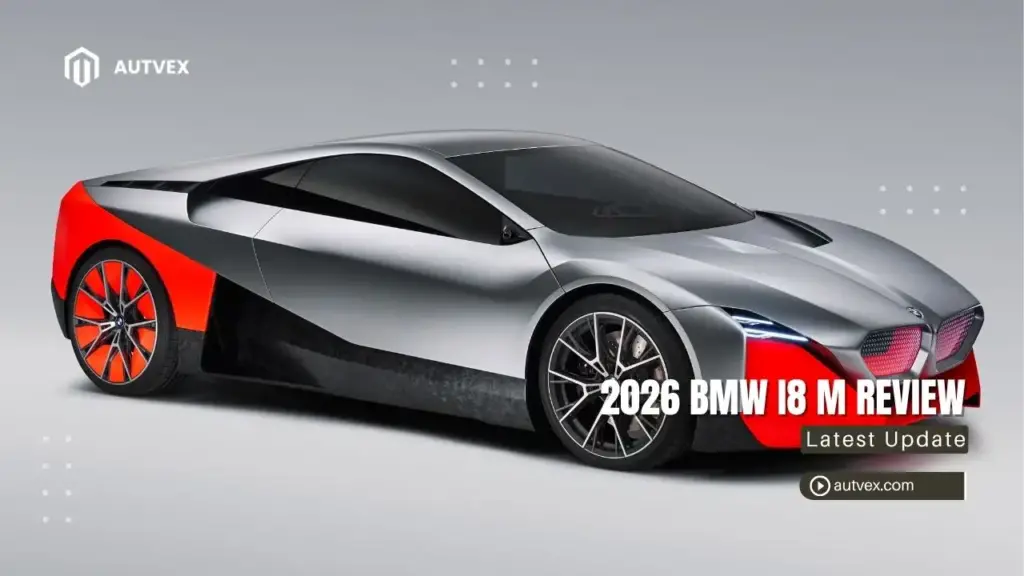The 2026 BMW i8 M does not exist as an official production vehicle. BMW has not announced or confirmed any plans for a 2026 i8 M model, and all online “reviews” are speculative content based on rumors rather than actual road tests[1]. The original BMW i8 production ended in June 2020 after producing 20,465 units worldwide, with no confirmed successor in BMW’s current vehicle lineup[2].
This confusion stems from YouTube videos using AI-generated imagery, clickbait articles, and misunderstanding about the BMW Vision M Next concept unveiled in 2019. According to Autvex automotive experts, prospective buyers should understand the distinction between concept vehicles and confirmed production models before making purchasing decisions or planning future vehicle acquisitions.
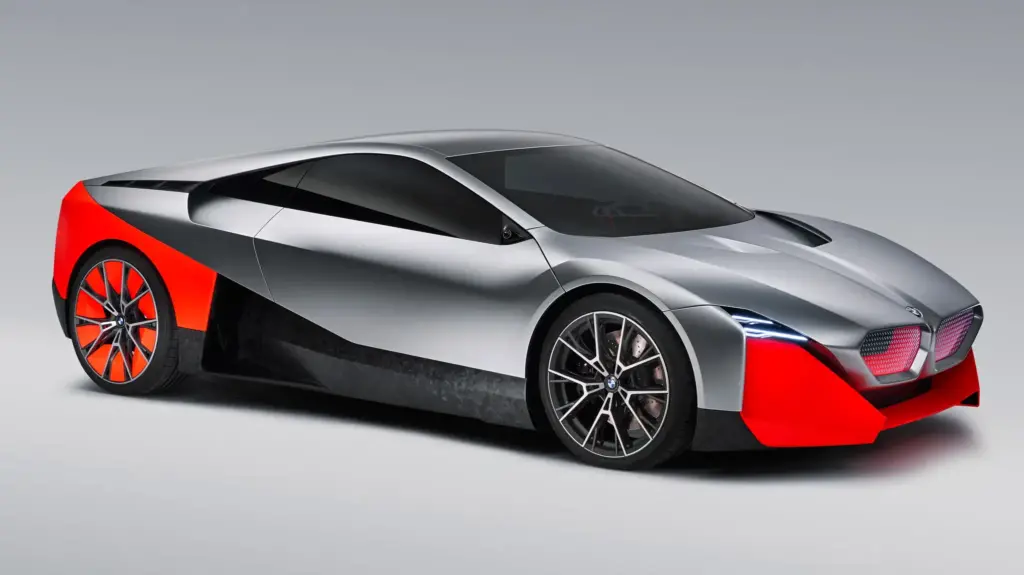
The Truth About the 2026 BMW i8 M
No Official Production Vehicle Exists
BMW has made no official announcements regarding a 2026 i8 M model. The automotive industry operates on established timelines for vehicle development, and without BMW press releases or dealer communications, claims about this vehicle remain purely speculative[1].
Key facts about BMW i8 status:
- Production ended: June 2020 after six-year manufacturing run
- Total units produced: 20,465 vehicles globally (coupe and roadster variants)
- Final vehicle: Portimao Blue i8 Roadster, the only example in that color
- Replacement timeline: No confirmed successor announced through 2026
- Plant reassignment: Leipzig facility shifted to iX3, i4, and iNext production[2]
The distinction between concept vehicles and production reality matters significantly. Concept cars showcase design direction and technological capabilities but don’t guarantee future production. When researching how long it takes to buy a car, consumers should focus on confirmed model year vehicles rather than rumored future releases.
Why You’re Seeing “2026 BMW i8 M” Content Online
Internet content about the non-existent 2026 i8 M proliferates for several interconnected reasons. Content creators generate speculative videos and articles to capitalize on enthusiast interest and drive web traffic[1].
Sources of misinformation:
- YouTube speculation: AI-generated imagery creates realistic-looking “reviews” of non-existent vehicles
- Clickbait tactics: Sensational headlines like “2026 i8 M SHOCKS EVERYONE” drive clicks
- Concept confusion: BMW Vision M Next concept from 2019 misidentified as production commitment
- Wishful thinking: Enthusiast desire for i8 successor presented as manufacturer plans
Warning signs to identify speculative content include absence of official BMW quotes, use of qualifiers like “expected,” “rumored,” or “could,” and lack of specific pricing or dealer allocation information. Legitimate automotive journalism from Motor Trend, Car and Driver, and Road & Track maintains clear distinctions between confirmed vehicles and speculation[3].
What BMW Actually Offers in 2026
BMW’s confirmed 2026 lineup includes traditional M performance vehicles and expanding electric offerings, but no i8 successor. Understanding available options helps consumers make informed purchasing decisions[4].
| Model Category | Available Vehicles | Starting Price | Performance Highlight |
|---|---|---|---|
| M Performance Gasoline | M2, M3, M4, M5 | $63,000-$103,000 | Up to 617 hp |
| Electric M Performance | i4 M50, iX M60, i7 M70 | $67,800-$119,000 | 536-650 hp |
| Sports Cars | M8 Competition (final year) | $133,000 | 617 hp, 0-60 in 3.0 sec |
| Future Platform | Neue Klasse (2025-2026) | TBA | Next-gen electric architecture |
The 2025 BMW i7 represents BMW’s flagship electric luxury sedan, while the i4 M50 delivers electric performance in a more accessible package. For sports car enthusiasts, the M8 Competition enters its final model year before discontinuation with no direct replacement announced[4].
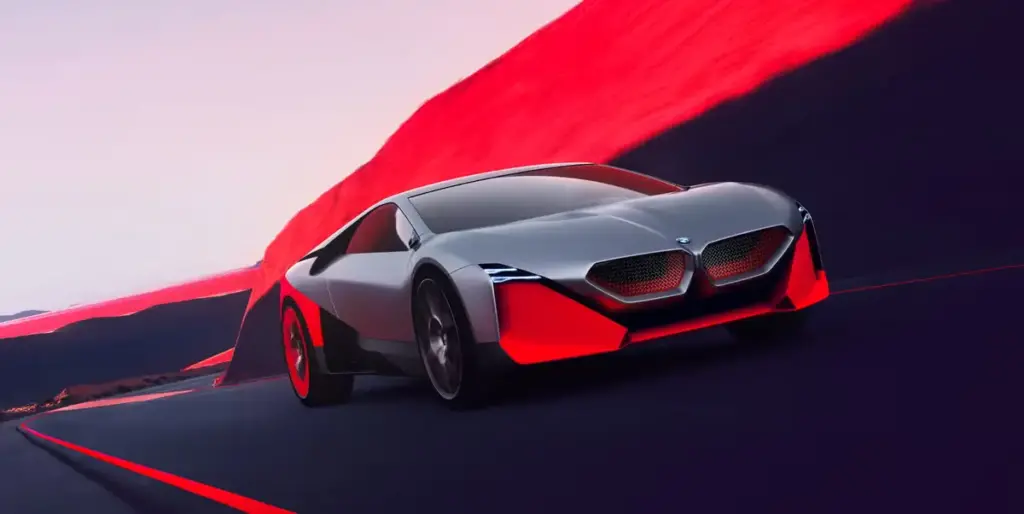
Understanding the BMW Vision M Next Concept
What is the Vision M Next?
The BMW Vision M Next concept debuted at the 2019 BMW #NEXTGen event in Munich, showcasing the brand’s vision for future performance vehicles. This design study explored how BMW M performance could evolve with electrification, but it never received production confirmation[5].
Concept car reality:
- Unveiling date: June 2019 at BMW #NEXTGen event
- Purpose: Design study and technology showcase
- Production commitment: None officially announced
- Timeline speculation: Some sources suggested 2025 potential, now passed without announcement
Concept vehicles serve multiple purposes beyond production planning. They gauge public reaction, showcase emerging technologies, and maintain brand excitement during product development cycles. The Vision M Next succeeded in generating enthusiasm but never transitioned to confirmed production status[5].
Vision M Next Specifications (Concept Only)
The Vision M Next concept featured impressive specifications that remain theoretical without production implementation. These numbers represent engineering targets rather than certified performance data[5].
| Specification | Vision M Next Concept | Original i8 Production |
|---|---|---|
| Powertrain | Turbo 4-cyl + dual electric motors | Turbo 3-cyl + single electric motor |
| Total output | 600 hp (441 kW) | 369 hp |
| 0-60 mph | 3.0 seconds | 4.4 seconds |
| Top speed | 186 mph (300 km/h) | 155 mph (limited) |
| Electric range | 62 miles (100 km) | 18 miles |
| Drive modes | AWD or RWD selectable | AWD only |
The 600-horsepower hybrid system represented a 63% power increase over the original i8, positioning the concept as a legitimate supercar competitor. The extended 62-mile electric range would meet daily commuting needs while maintaining sports car performance[5].
Design and Technology Showcased in Concept
The Vision M Next incorporated striking design elements inspired by BMW’s motorsport heritage, particularly the iconic M1 supercar from the late 1970s. These features demonstrated BMW’s design language direction for future performance vehicles[5].
Distinctive design features:
- Butterfly doors: Dramatic upward-opening doors echoing BMW M1 heritage
- Carbon fiber construction: Lightweight CFRP monocoque chassis
- Aerodynamic sculpting: Active aero elements optimizing downforce and efficiency
- Thrilling Orange accents: Bold color highlighting functional air intakes
- Minimalist cockpit: Driver-focused interior removing unnecessary elements
Technology highlights included the “focus logic” display system that adapted information presentation based on vehicle speed. At standstill, information appeared in the steering wheel; when moving, the curved glass display activated; during high-speed driving, the head-up display prioritized critical data to maintain driver focus[5].
Why Concepts Don’t Always Become Production Cars
The automotive industry creates hundreds of concept vehicles that never reach production. Understanding these barriers helps consumers set realistic expectations about vehicle announcements[3].
Common production obstacles:
- Development costs: Exotic materials and limited production volumes create prohibitive per-unit costs
- Market demand: Niche sports cars generate less profit than SUVs and sedans
- Regulatory compliance: Meeting crash safety and emissions standards adds complexity and expense
- Strategic priorities: Manufacturers shift resources to higher-volume segments
- Profitability analysis: Business case must justify multi-million dollar development investment
The original i8 demonstrated these challenges. Despite innovative technology and distinctive styling, only 192 units sold in the United States during 2020, its final year. Such limited demand makes business cases for successors difficult to justify when resources could develop higher-volume electric SUVs[2].
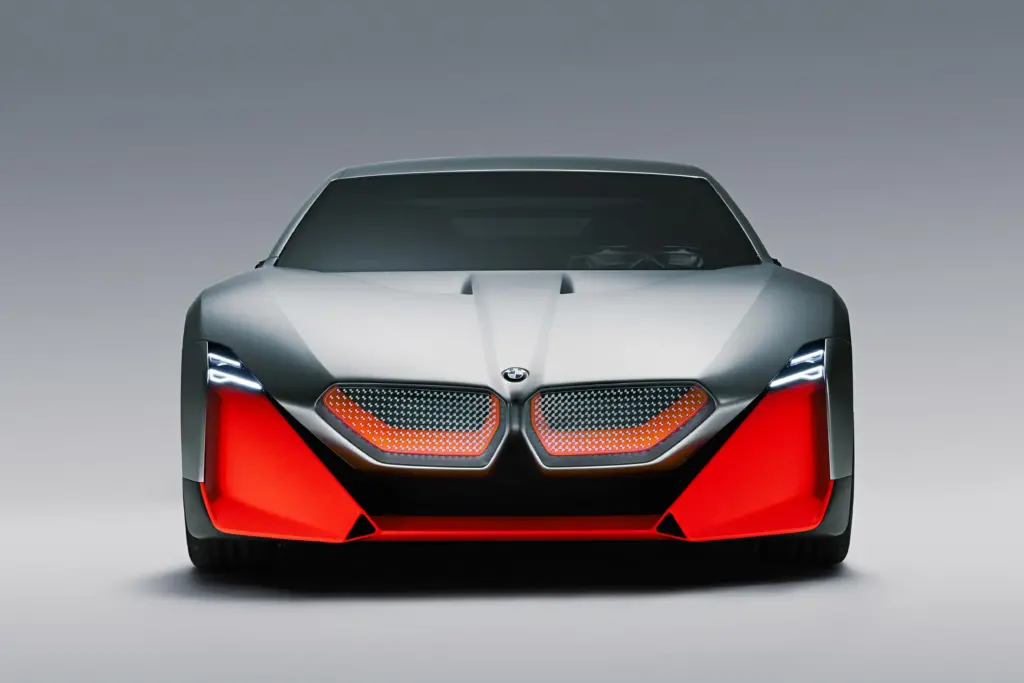
The Original BMW i8 (2014-2020): What Actually Existed
BMW i8 Production History
The BMW i8 represented a groundbreaking achievement when it launched, becoming the best-selling plug-in hybrid sports car in automotive history. Its production run spanned six years before COVID-19 pandemic impacts and strategic shifts ended manufacturing[2].
Production timeline:
- Development period: 2009-2013 (concept to production)
- Production launch: April 2014 in Leipzig, Germany
- U.S. market debut: August 2014 retail deliveries
- Roadster introduction: May 2018 (alongside updated coupe)
- Production conclusion: June 2020 (delayed from April due to pandemic)
- Total production: 20,465 units globally[2]
The i8 launched BMW’s electrified sub-brand alongside the i3 city car. While the i3 targeted urban mobility, the i8 showcased that electrification could enhance rather than compromise performance driving. This dual-purpose strategy helped BMW develop expertise in electric powertrains and lightweight carbon fiber construction[6].
Original i8 Performance and Specifications
The production i8 balanced performance with efficiency, though critics noted that straight-line acceleration didn’t match the exotic styling and six-figure price point. Understanding actual specifications prevents unrealistic comparisons with rumored successors[2].
| Specification | 2014-2017 i8 | 2018-2020 i8 |
|---|---|---|
| Engine | 1.5L turbo 3-cylinder | 1.5L turbo 3-cylinder |
| Engine output | 228 hp | 228 hp |
| Electric motor | 131 hp | 143 hp |
| Total output | 369 hp | 369 hp |
| Torque | 420 lb-ft | 420 lb-ft |
| 0-60 mph | 4.4 seconds | 4.4 seconds |
| Top speed | 155 mph (limited) | 155 mph (limited) |
| Battery capacity | 7.1 kWh | 11.6 kWh |
| Electric range (EPA) | 15 miles | 18 miles |
| Fuel economy | 76 MPGe combined | 69 MPGe combined |
The i8’s party trick was achieving 76 MPGe efficiency ratings while delivering exotic car styling with butterfly doors and space-age interior design. However, the 4.4-second 0-60 mph time seemed modest compared to contemporaries like the Porsche 911 Turbo (2.9 seconds) priced similarly[2].
Why BMW Discontinued the i8
BMW’s decision to end i8 production reflected multiple market and strategic factors rather than a single cause. Understanding these dynamics provides context for why no successor emerged[6].
Discontinuation factors:
- Price-performance gap: $147,500-$163,300 MSRP exceeded performance capabilities
- Limited sales volume: Only 192 U.S. sales in 2020 final year
- Technology evolution: Battery and electric motor advances made plug-in hybrid approach less compelling
- COVID-19 impact: Pandemic devastated luxury sports car segment
- Strategic pivot: BMW shifted resources to pure electric vehicles (iX3, i4, iNext)
- Production facility: Leipzig plant needed for higher-volume electric models[6]
The i8 succeeded as a technology demonstrator and brand halo vehicle. Knowledge gained developing its carbon fiber passenger cell contributed to the Carbon Core structure used in later 7 Series models. From this perspective, the i8 achieved its mission despite limited commercial success[6].
Used BMW i8 Market in 2025
Dramatic depreciation has made used i8 ownership surprisingly accessible in 2025. Cars that originally cost $150,000+ now trade for less than a new Toyota Camry, creating unique value proposition for enthusiasts willing to accept potential maintenance concerns[7].
| Model Year | Current Market Value | Original MSRP | Depreciation |
|---|---|---|---|
| 2014-2015 | $60,000-$70,000 | $135,700-$147,500 | 55-60% |
| 2016-2017 | $70,000-$80,000 | $147,500 | 50-55% |
| 2018-2020 | $80,000-$95,000 | $147,500-$163,300 | 40-50% |
| Roadster | $90,000-$110,000 | $163,300 | 30-40% |
Buyers considering used i8 models should evaluate several factors. While the distinctive styling remains attention-grabbing in 2025, the technology feels dated compared to modern EVs. The 18-mile electric range provides minimal practical utility, and finding qualified service technicians for the complex carbon fiber chassis can prove challenging. For more information on how many miles is good for a used car, research specific maintenance histories[7].
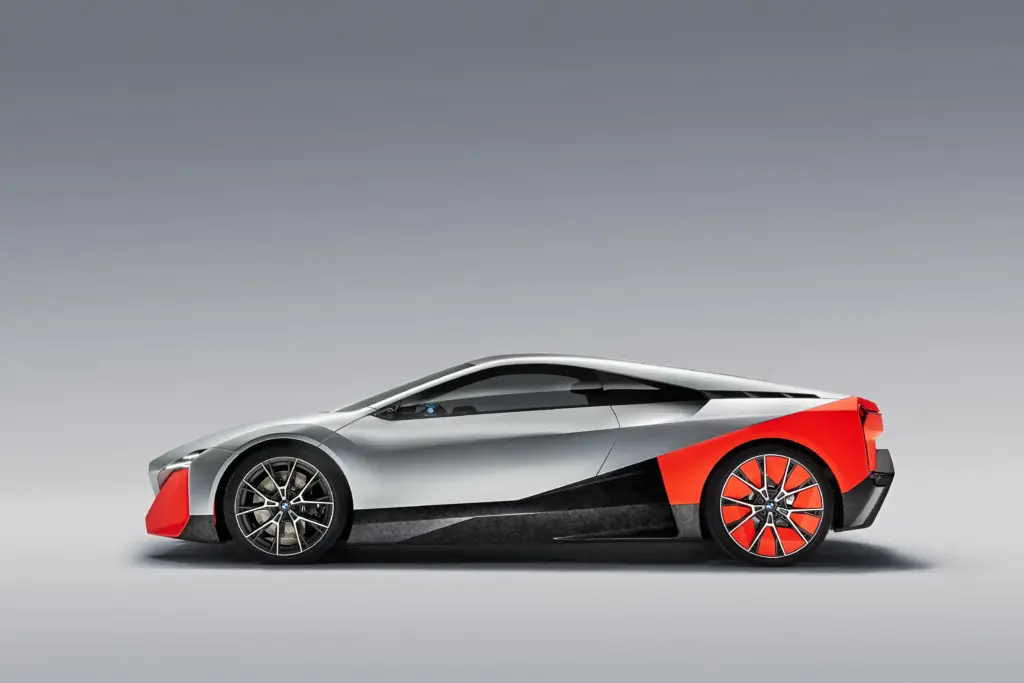
Separating Rumor from Reality: What to Look For
How to Identify Speculative Content
Consumers browsing automotive content must develop critical evaluation skills to distinguish legitimate journalism from speculation. Several red flags consistently appear in unreliable sources[1].
Warning signs of speculative content:
- AI-generated imagery: Photorealistic renders without manufacturer watermarks
- Vague sourcing: Phrases like “industry insiders suggest” or “rumors indicate” without named sources
- Absence of official quotes: No statements from BMW executives or spokespersons
- Speculation language: Heavy use of “expected,” “could,” “might,” “rumored,” “anticipated”
- Missing regulatory filings: No EPA fuel economy data or NHTSA crash test information
- Dealer silence: No mention of dealer allocation or ordering windows
Legitimate vehicle announcements follow predictable patterns. Manufacturers issue official press releases through their newsrooms, provide specific technical data, and establish clear production timelines. The BMW i7 announcement, for example, included detailed specifications, pricing, and availability dates[3].
Trusted Sources for Authentic BMW News
Reliable automotive information comes from established channels with reputation stakes in accuracy. These sources maintain professional standards and corrections policies[3].
Credible information sources:
- BMW official channels: press.bmwgroup.com, bmwusa.com future vehicles section
- Established publications: Car and Driver, Motor Trend, Road & Track, Automotive News
- Industry analysts: J.D. Power, Edmunds, Kelley Blue Book market research
- BMW dealer communications: Official dealership training materials and allocation bulletins
- Regulatory filings: EPA fuel economy database, NHTSA crash test results
According to Autvex automotive research standards, consumers should verify information across multiple trusted sources before making purchasing decisions. When Car and Driver published speculation about a potential i8 successor, they clearly labeled it as speculation rather than confirmed news[3].
Timeline for Legitimate New Model Announcements
Automotive development follows established timelines that help consumers gauge announcement legitimacy. Understanding these patterns prevents falling for premature speculation[3].
Development timeline stages:
- Concept unveiling: 2-5 years before potential production (Vision M Next: 2019)
- Production confirmation: 18-24 months before launch with specific dates
- Specifications release: 12-18 months before launch with detailed technical data
- Pricing announcement: 6-12 months before launch with trim level breakdown
- Dealer allocation: 3-6 months before launch with ordering windows
- Media preview: 2-3 months before launch with first drive reviews
- Customer deliveries: Production launch date with VIN tracking
For perspective, legitimate 2026 model year vehicles receive official announcements during 2025. The Vision M Next concept appeared in 2019, making 2024-2025 the logical window for production confirmation if BMW intended to proceed. The absence of any announcement by late 2025 strongly suggests no near-term i8 successor[3].
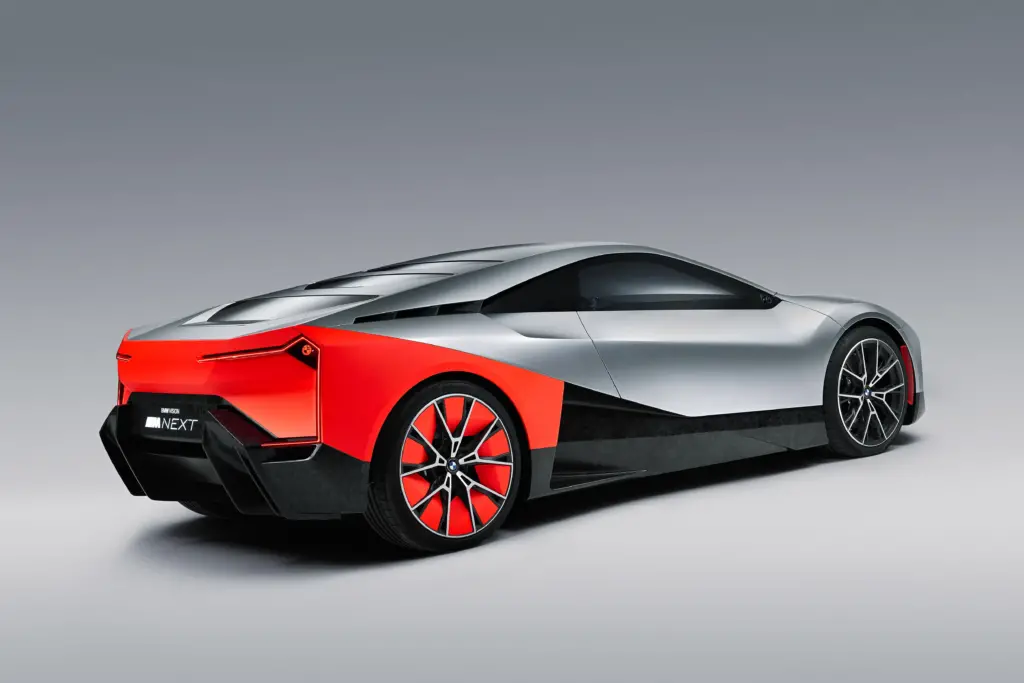
Current BMW Hybrid and Electric Sports Cars
BMW i4 M50: Available Electric Performance Sedan
The i4 M50 represents BMW’s current electric performance offering, delivering impressive acceleration in a practical four-door package. Unlike the non-existent i8 M, consumers can purchase the i4 M50 today at BMW dealerships nationwide[8].
i4 M50 specifications:
- Powertrain: Dual synchronous AC motors (front and rear)
- Total output: 536 hp, 586 lb-ft torque
- Acceleration: 0-60 mph in 3.7 seconds (Car and Driver tested 3.3 seconds)
- Top speed: 140 mph (electronically limited)
- EPA range: 227-270 miles depending on wheel/tire selection
- Battery capacity: 83.9 kWh usable
- DC fast charging: 205 kW peak (10-80% in approximately 31 minutes)
- Starting price: $67,800 MSRP[8]
The i4 M50 shares its platform with the combustion-powered 4 Series Gran Coupe, providing familiar BMW driving dynamics with instant electric torque. EPA efficiency ratings reach 80 MPGe combined, though aggressive driving significantly impacts range. Real-world testing suggests 250-mile range under mixed conditions[8].
BMW iX M60: Electric Performance SUV
For buyers wanting electric performance with SUV practicality, the iX M60 delivers impressive capabilities in BMW’s flagship electric crossover. This represents genuine production alternative to speculative sports cars[4].
iX M60 highlights:
- Configuration: Dual-motor all-wheel drive electric SUV
- Power output: 619 hp, 811 lb-ft torque
- Performance: 0-60 mph in 3.6 seconds
- Range: 288 miles EPA estimated
- Towing capacity: 6,000 pounds
- Cargo volume: 35.5 cubic feet behind rear seats
- Starting MSRP: $111,500
The iX M60 prioritizes luxury and technology over pure sports car dynamics, but its acceleration rivals dedicated performance vehicles. The spacious interior accommodates five adults comfortably, making it practical for daily family use while delivering weekend excitement[4].
BMW M8 Competition: Current Flagship Sports Car
BMW’s fastest current sports car enters its final model year in 2026 without a confirmed successor. The M8 Competition represents traditional BMW M performance philosophy with twin-turbo V8 power[4].
M8 Competition specifications:
- Engine: 4.4L twin-turbocharged V8
- Output: 617 hp, 553 lb-ft torque (625 lb-ft overboost)
- Acceleration: 0-60 mph in 3.0 seconds
- Top speed: 189 mph (with M Driver’s Package)
- Transmission: 8-speed automatic with paddle shifters
- Body styles: Coupe, convertible, Gran Coupe four-door
- Starting price: $133,000 (Gran Coupe $137,000)[4]
The M8 Competition matches Vision M Next concept acceleration while delivering proven reliability and nationwide service support. However, fuel economy averages just 15 mpg combined with premium fuel requirements. As BMW transitions toward electrification, the M8’s discontinuation leaves uncertainty about flagship sports car succession[4].
Future BMW Electric Performance Plans
BMW’s confirmed future electric vehicle strategy focuses on the Neue Klasse architecture launching 2025-2026. This next-generation platform will underpin multiple electric models with improved efficiency and performance[4].
Confirmed future developments:
- Neue Klasse platform: Dedicated EV architecture debuting 2025-2026
- Next-gen electric sedans: 3 Series-sized electric sedan confirmed for 2026
- Electric M vehicles: High-performance variants planned for Neue Klasse models
- Z4 electric successor: Rumors suggest electric roadster development, unconfirmed
- Sports car uncertainty: No official i8 successor announcement in BMW communications
BMW’s electric vehicle strategy prioritizes volume segments (sedans and SUVs) over niche sports cars. While enthusiasts hope for an electric sports car successor to the i8, business realities suggest resources flow toward models with broader market appeal. The 2024 BMW i7 flagship sedan exemplifies this strategic direction[4].
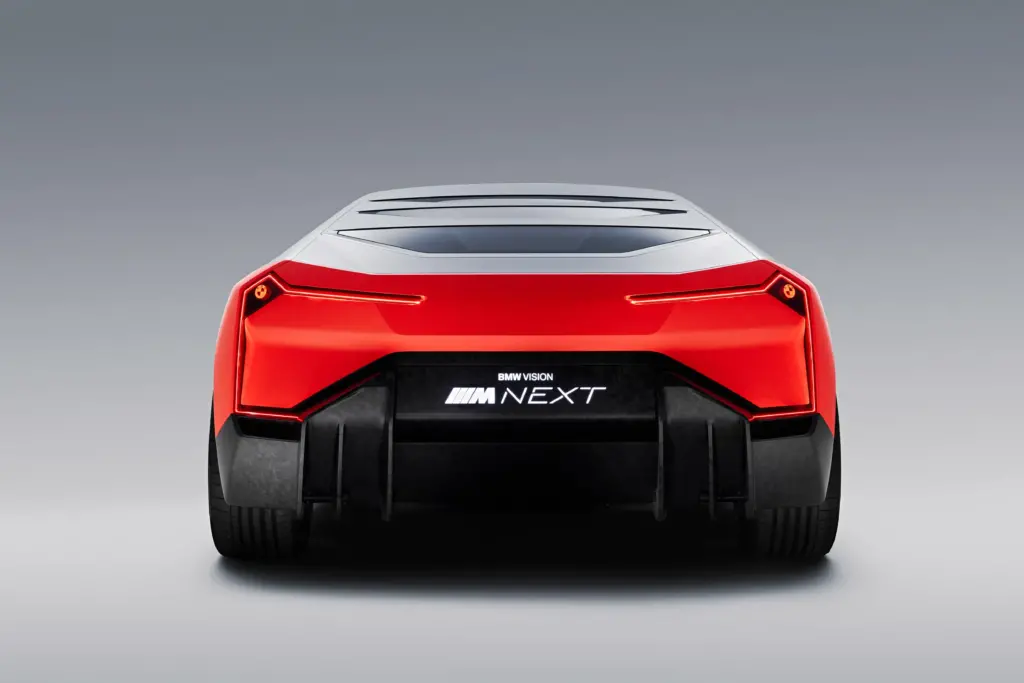
What a Real 2026 BMW i8 M Would Need
Performance Expectations for Modern Hybrid Sports Cars
If BMW were to create a legitimate i8 successor for 2026, it would compete in an evolved market with elevated performance standards. Contemporary hybrid supercars set benchmarks that any new entrant must match or exceed[5].
| Vehicle | Power | 0-60 mph | Electric Range | Price |
|---|---|---|---|---|
| Ferrari SF90 Stradale | 986 hp | 2.5 sec | 15.5 miles | $524,000 |
| McLaren Artura | 671 hp | 3.0 sec | 11 miles | $237,000 |
| Porsche 918 successor (rumored) | 700+ hp | <2.5 sec | 30+ miles | $200,000+ |
| Hypothetical i8 M | 600-700 hp | <3.0 sec | 50+ miles | $150,000-$200,000 |
Modern hybrid sports cars must deliver supercar performance while providing meaningful electric-only range. The original i8’s 18-mile range felt token even in 2014; today’s standards demand 50+ miles to justify plug-in hybrid complexity versus pure electric drivetrains[5].
Technology Features Expected in 2026 Launch
Contemporary luxury performance vehicles incorporate sophisticated technology systems that buyers now expect as standard equipment. Any 2026 sports car would require cutting-edge features[4].
Required technology systems:
- Advanced driver assistance: Level 2+ hands-free highway driving capability
- Over-the-air updates: Remote software updates adding features and fixing issues
- Digital cockpit: Fully configurable digital instrument cluster and infotainment
- Thermal management: Advanced battery cooling for consistent performance
- Vehicle-to-grid: Bidirectional charging supporting home energy systems
- AR head-up display: Augmented reality navigation and safety information projection
The technology gap between 2014 i8 and 2026 expectations spans massive advances in connectivity, automation, and user experience. Modern buyers expect smartphone-level integration with Apple CarPlay, Android Auto, and native apps. Without these features, even exceptional performance struggles to justify premium pricing[4].
Market Position and Competition Analysis
The plug-in hybrid sports car segment faces challenging market dynamics in 2025-2026. Consumer preferences shift toward pure electric vehicles as range anxiety diminishes, while traditional enthusiasts prefer combustion engines[3].
Market challenges:
- Shrinking segment: Plug-in hybrid sports car sales declining as pure EVs improve
- Weight penalties: Hybrid systems add 500+ pounds versus combustion equivalents
- Complexity costs: Maintaining both powertrains increases purchase price and maintenance
- Pure EV competition: Porsche Taycan, Audi e-tron GT offer compelling electric performance
- Limited volume: Niche sports cars generate minimal profit versus SUV focus
Porsche Taycan sales demonstrate electric sports sedan viability, with over 40,000 global deliveries in 2023. The Taycan Turbo S delivers 938 hp and 2.6-second 0-60 mph times without hybrid complexity. This competitive landscape makes plug-in hybrid sports car business cases increasingly difficult to justify[3].
Why BMW Might (or Might Not) Revive the i8
Evaluating realistic scenarios for i8 revival requires balancing enthusiast desire against business realities. BMW faces strategic decisions about resource allocation amid industry electrification[6].
Arguments for i8 revival:
- Halo effect: Flagship sports car enhances brand image across entire lineup
- Technology showcase: Platform demonstrating latest performance and efficiency advances
- Enthusiast demand: Vocal community requesting distinctive sports car option
- Heritage continuation: BMW M1 and i8 established sports car legacy worth maintaining
Arguments against i8 revival:
- Limited profitability: Low-volume sports cars generate minimal profit margins
- Resource priorities: Development budgets allocated to high-volume electric SUVs and sedans
- Market uncertainty: Unclear demand for six-figure plug-in hybrid sports cars
- Strategic focus: BMW emphasizing volume segments over niche products
- Existing alternatives: M8 Competition, i4 M50 address performance segments
Current industry analysis suggests BMW prioritizes electric vehicle mass-market adoption over halo sports cars. Until broader EV infrastructure and acceptance reach critical mass, limited resources focus on vehicles generating sustainable profitability. Understanding what happens when your car is totaled but still drivable may be more immediately useful than waiting for unlikely sports car announcements[6].
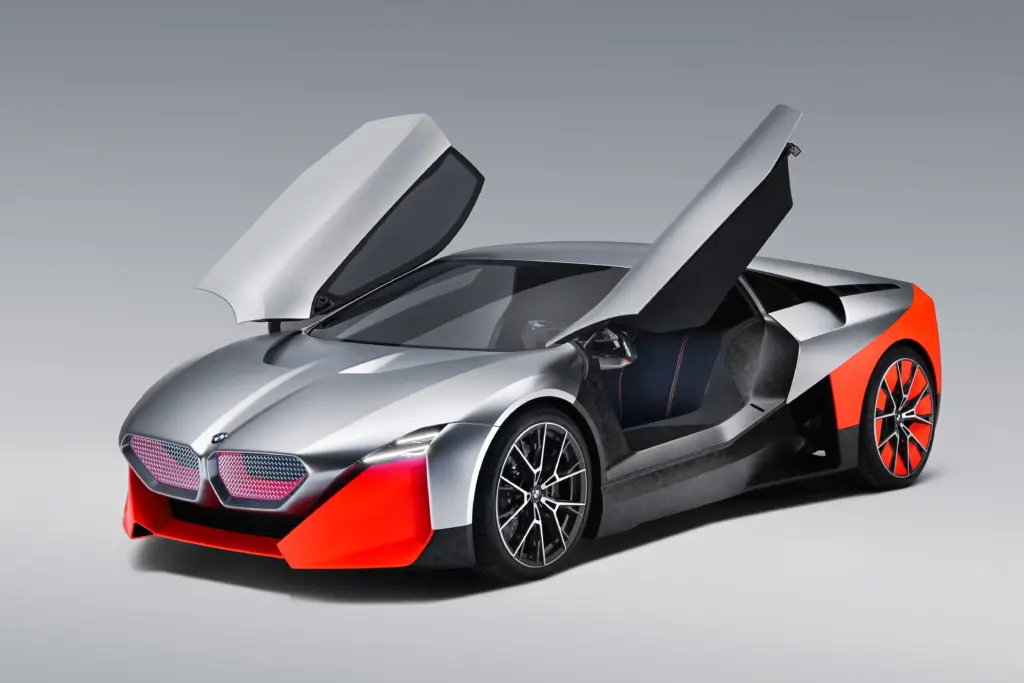
How to Stay Informed About Real BMW Announcements
Official BMW Communication Channels
Consumers wanting accurate, timely information about future BMW vehicles should follow official manufacturer channels. These sources provide first-hand announcements without speculation or misinformation[3].
Official BMW sources:
- BMW Newsroom: press.bmwgroup.com publishes all official press releases and announcements
- BMW USA website: bmwusa.com/future-vehicles.html lists confirmed upcoming models
- Official social media: Verified @BMW accounts on Twitter, Instagram, Facebook
- Dealer communications: BMW Financial Services and dealer bulletins confirm allocation and ordering
- Investor relations: Quarterly earnings calls discuss product strategy and timelines
BMW maintains transparent communication about production vehicles while remaining silent about unconfirmed models. The absence of official announcements provides strong evidence that rumored vehicles lack substance. When BMW confirms new models, they provide comprehensive specifications, pricing, and availability dates simultaneously[3].
Automotive Industry Events and Auto Shows
Major automotive industry events serve as primary venues for significant vehicle announcements and concept unveiling. Monitoring these events provides insight into manufacturer direction[3].
Key industry events:
- Munich IAA Mobility: September of odd-numbered years, BMW’s home show for major announcements
- Consumer Electronics Show (CES): January in Las Vegas, technology and electric vehicle focus
- New York International Auto Show: March/April, important U.S. market debuts
- Los Angeles Auto Show: November, West Coast market and California-focused announcements
BMW traditionally reserves most significant announcements for the Munich IAA show, leveraging home-market advantage. The Vision M Next concept debuted at BMW #NEXTGen 2019, not a traditional auto show, suggesting alternative announcement formats for future concepts[5].
Setting Realistic Expectations
Automotive enthusiasts must balance excitement about potential future vehicles with realistic understanding of development timelines and business priorities. Patience prevents disappointment from unfulfilled speculation[3].
Realistic expectation guidelines:
- Concept to production: Minimum 3-5 years from concept unveiling to production launch
- Official silence: Absence of announcements indicates no near-term plans
- Business priorities: Volume segments receive resources before niche products
- Technology readiness: New powertrains require extensive validation before launch
- Market conditions: Economic factors influence manufacturer product decisions
The Vision M Next concept appeared in 2019, making 2024-2025 the earliest realistic production window. With no announcements by late 2025, any potential production likely wouldn’t arrive before 2028-2029 at earliest. Consumers needing vehicles sooner should focus on available models rather than waiting for uncertain futures[3].
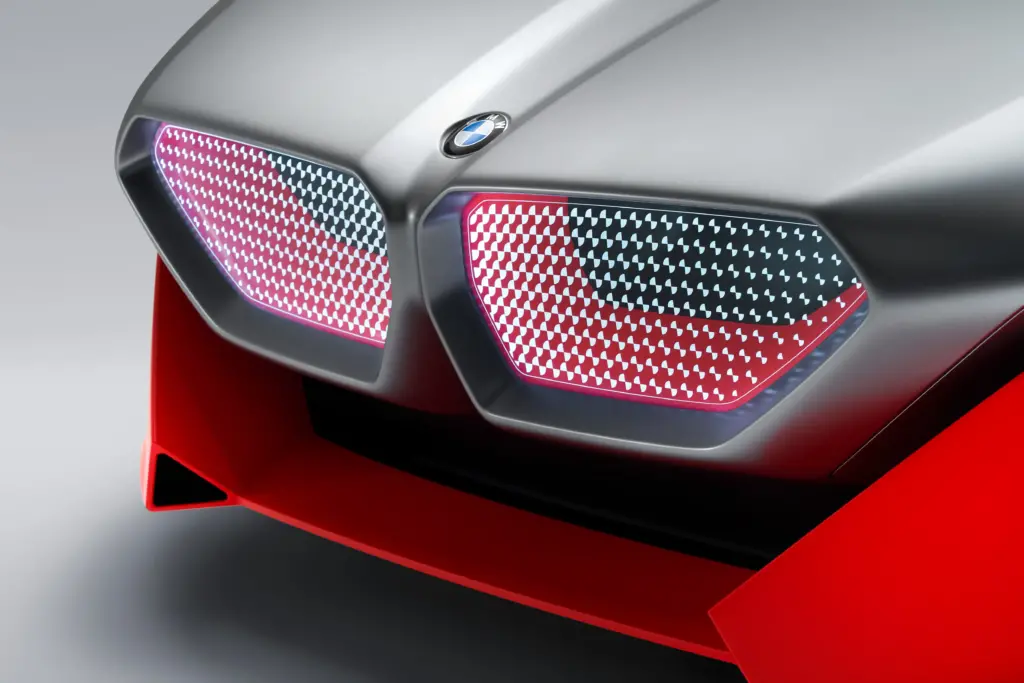
Alternatives to the Non-Existent 2026 BMW i8 M
Used BMW i8 (2014-2020 Models)
For buyers specifically wanting i8 ownership experience, the used market offers accessible pricing on distinctive vehicles. Understanding benefits and concerns helps evaluate whether depreciated i8 models suit individual needs[7].
Used i8 considerations:
| Benefits | Concerns |
|---|---|
| Distinctive styling that remains eye-catching | Technology feels dated compared to modern EVs |
| Depreciation makes ownership affordable | 18-mile electric range provides minimal utility |
| Unique butterfly doors and exotic presence | Complex carbon fiber chassis repair expensive |
| Plug-in hybrid efficiency for daily driving | Limited service technician expertise availability |
| Appreciating collectibility potential | Parts availability declining as production ended |
Buyers considering used i8 models should thoroughly inspect carbon fiber structure, battery health, and service history. The complex hybrid powertrain requires specialized knowledge, limiting service options to BMW dealerships and select independent specialists. For those prioritizing head-turning design over cutting-edge technology, depreciated i8s offer unique value[7].
Current BMW Electric Performance Models
BMW’s existing electric performance lineup provides immediate availability with modern technology and full manufacturer support. These represent practical alternatives to waiting for uncertain sports car announcements[4].
Current BMW electric performance options:
- i4 M50: Electric sedan combining performance with practicality, 536 hp, $67,800
- iX M60: Performance electric SUV with 619 hp and family-friendly space, $111,500
- i7 M70 xDrive: Flagship electric sedan with 650 hp and ultimate luxury, $119,000
The i4 M50 delivers closest approximation to sports car dynamics in BMW’s current electric lineup, with 3.7-second 0-60 mph acceleration in a four-door configuration. While lacking two-door coupe styling, the i4 M50’s performance capabilities exceed the original i8 while providing modern technology and over 250 miles of real-world range[8].
Competitor Hybrid and Electric Sports Cars
Several manufacturers offer compelling hybrid and electric sports cars available today, providing alternatives to waiting for BMW announcements[3].
| Model | Type | Power | 0-60 mph | Range | Price |
|---|---|---|---|---|---|
| Porsche Taycan Turbo S | Pure electric | 938 hp | 2.6 sec | 227 mi | $187,400 |
| Audi RS e-tron GT | Pure electric | 637 hp | 3.1 sec | 232 mi | $143,400 |
| Mercedes-AMG EQS 53 4MATIC+ | Pure electric | 751 hp | 3.4 sec | 305 mi | $148,550 |
| Chevrolet Corvette E-Ray | Hybrid | 655 hp | 2.5 sec | N/A | $104,295 |
| Acura NSX Type S (used) | Hybrid | 600 hp | 2.7 sec | N/A | $80,000-$120,000 |
The Porsche Taycan represents the most direct i8 successor alternative, combining sports car dynamics with electric efficiency in a practical daily driver package. The Chevrolet Corvette E-Ray offers hybrid performance at significantly lower pricing, demonstrating that electrified sports cars need not carry six-figure price tags[3].
Waiting for Future BMW Sports Car Announcements
Consumers can monitor BMW’s future product pipeline for potential sports car developments, though no confirmed announcements exist. Managing expectations prevents disappointment from speculation[4].
Future possibilities to monitor:
- All-electric sports car: BMW rumored to develop dedicated electric performance model
- Z4 electric successor: Potential roadster replacement for aging Z4 platform
- Neue Klasse M variants: Next-generation electric vehicles receiving M performance treatment
- Timeline uncertainty: Any new sports car likely 2027-2029 earliest if approved
Rather than postponing vehicle purchases waiting for uncertain announcements, consumers should evaluate whether existing models meet current needs. The automotive market continuously evolves, but waiting indefinitely means missing years of vehicle enjoyment. When legitimate announcements occur, sufficient lead time allows informed decision-making without rushed purchases[4].
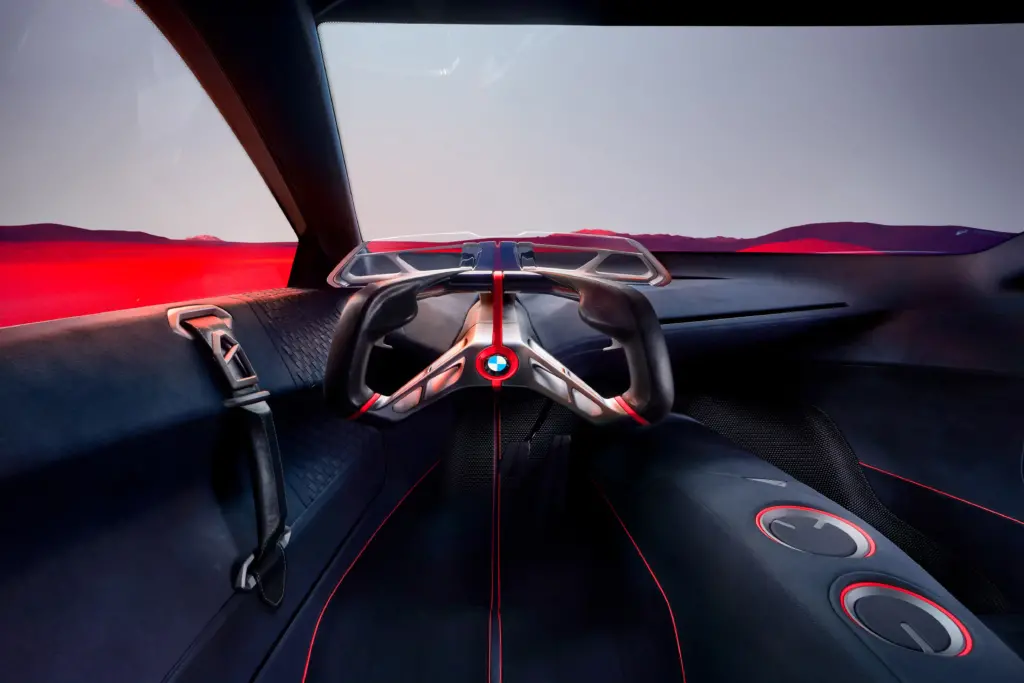
Key Takeaways
- The 2026 BMW i8 M does not exist as an official production vehicle; all online reviews are speculation based on concepts.
- BMW ended i8 production in June 2020 after producing 20,465 units with no confirmed successor announced through 2026.
- The BMW Vision M Next concept from 2019 showcased potential design direction but never received production confirmation.
- BMW currently offers the i4 M50 electric sedan and M8 Competition as performance alternatives, both available for immediate purchase.
- Used BMW i8 models now cost $60,000-$95,000, making exotic styling accessible though with dated technology and limited electric range.
- Consumers should follow official BMW channels and established automotive publications for accurate vehicle information, avoiding speculative content.
- Future BMW sports car announcements remain uncertain, with resources prioritized toward volume electric vehicles on Neue Klasse platform.
FAQs
Is the 2026 BMW i8 M a real car?
No, the 2026 BMW i8 M is not a real production vehicle. BMW has made no official announcements about an i8 successor, and all online content is speculation based on the 2019 Vision M Next concept. The original i8 ended production in June 2020[1][2].
When will BMW announce a new i8?
BMW has not indicated plans to announce a new i8. The Vision M Next concept from 2019 showcased potential direction but received no production confirmation. With no announcements by late 2025, any potential successor wouldn’t arrive before 2028-2029 at earliest, if at all[5].
What replaced the BMW i8?
BMW has not officially replaced the i8 with a specific successor. The company shifted focus to volume electric vehicles like the iX3, i4, and iX models. The M8 Competition serves as BMW’s flagship sports car through 2026[6].
How much does a used BMW i8 cost in 2025?
Used BMW i8 models range from $60,000 to $95,000 depending on year and condition, representing 40-60% depreciation from original $147,500-$163,300 pricing. Roadster variants command premium pricing at $90,000-$110,000[7].
What is the BMW Vision M Next concept?
The Vision M Next is a 2019 concept car showcasing potential future BMW performance direction. It featured 600 hp hybrid powertrain, 3.0-second 0-60 mph time, and 62-mile electric range. The concept never received production confirmation[5].
Will BMW make another plug-in hybrid sports car?
BMW has not confirmed plans for another plug-in hybrid sports car. The company’s current strategy emphasizes pure electric vehicles over plug-in hybrids as battery technology improves. Future M performance models will likely be fully electric[4].
What is BMW’s fastest electric car in 2026?
The BMW i7 M70 xDrive is BMW’s fastest electric car for 2026, producing 650 hp and reaching 60 mph in 3.5 seconds. The i4 M50 (536 hp, 3.7 seconds) offers better driving dynamics in a smaller package[4][8].
Can I still buy a new BMW i8?
No, BMW i8 production ended in June 2020. No new i8 models remain in dealer inventory. Buyers interested in i8 ownership must purchase used examples from private sellers or used car dealers[2].
Why did BMW discontinue the i8?
BMW discontinued the i8 due to limited sales volumes (192 U.S. sales in 2020), high pricing versus performance, evolving battery technology making the design obsolete, and strategic shifts toward pure electric vehicles. The Leipzig plant needed capacity for iX3 and i4 production[6].
What BMW sports cars are available in 2026?
BMW offers the M2, M3, M4, M5, and M8 Competition as traditional sports cars, plus the i4 M50 electric performance sedan. The M8 enters its final model year. The 2-Series Coupe and Z4 roadster provide entry-level sports car options[4].
References
- Car and Driver. (2023). 2026 BMW i8 M: What We Know So Far. https://www.caranddriver.com/bmw/i8-m
- Wikipedia. (2025). BMW i8. https://en.wikipedia.org/wiki/BMW_i8
- Edmunds. (2025). 2025 BMW i4 Prices, Reviews, and Pictures. https://www.edmunds.com/bmw/i4/
- BMW USA. (2025). BMW Future Vehicles. https://www.bmwusa.com/future-vehicles.html
- BMW Press. (2025). BMW VISION M NEXT: The future of driving dynamics at BMW. https://www.press.bmwgroup.com/global/article/detail/T0297304EN/bmw-vision-m-next-boost-your-moment
- SlashGear. (2024). Here’s Why The BMW i8 Was Discontinued. https://www.slashgear.com/1605576/why-bmw-i8-discontinued-what-happened/
- BMW Blog. (2025). The Futuristic BMW i8 Now Costs Less Than a Toyota Camry. https://www.bmwblog.com/2025/05/05/bmw-i8-used-plug-in-hybrid-sports-car-buyers-guide/
- Car and Driver. (2024). 2025 BMW i4 Review, Pricing, and Specs. https://www.caranddriver.com/bmw/i4

I am a senior automotive analyst at Autvex. Expert vehicle evaluations, in-depth reviews, and objective analysis helping readers make informed automotive decisions with years of industry experience.

